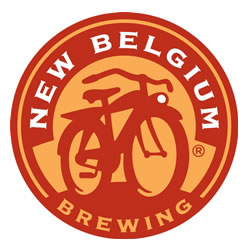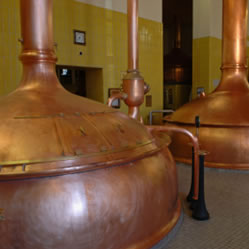Many are amazed at the head of steam the trend of good, quality beer has built up in recent years. For many home brew entrepreneurs, the increasing demand for microbrews and quality beers has made their dreams come true. The market seems to show little sign of slowing down. More and more breweries are opening every year at the craft and microbrew level, and even the big companies are trying to compete and keep their formidable chunk of the beer market. Well, there will always be those who want the cheapest of schwill. But more and more people want something more out of their beer: nutrition, flavor, and real tradition.
 |
Let’s start with some definitions. Microbreweries are considered those breweries that produce less than 15,000 barrels a year. Microbrews also tend to focus on producing the highest quality beer, and in the U.S., this also qualifies most of them as craft breweries. Unlike bigger breweries, the eye towards quality means that beer is actually made with real barley, hops, and yeast. The addition of rice and corn found in the cheapest schwill are not found in microbrews. Although this means an increased cost of up to 60% that of mainstream beers, microbrews manage to do quite well in a consistently shrinking beer market. Microbrew sales consistently have risen 40% in recent years, with new breweries popping up with regionally-based fans all over the country. In order to study the methods of the micro breweries success, lets look at one of the biggest success stories.
One beer manufacturer that has risen above the qualifier for microbrews while still maintaining its craft brewery status is New Belgium. With its very popular flagship beer, Fat Tire, New Belgium has continued in the tradition of craft brewing excellence, even while exponentially increasing its production. For those interested in the business of beer, New Belgium is a great company to study. With well-studied brewing expertise they have managed time and time again to upgrade their brewery production without sacrificing quality.
One undeniable aspect of New Belgium’s success is ingenuity and green production techniques. With a commitment to sustainable production methods, New Belgium has merged ideology with efficiency and some crackin’ good outside the box thinking. Since 1999, the New Belgium brewery has been powered from 100% renewable energy sources. 30% of the energy that is used to manufacture is harvested from the biodegradation of their own spent grains, and the rest comes from wind power, bought off the grid of the power company with specific earmarking for wind farms. With other companies scrambling to attain the reputation of being “green”, New Belgium is an example of authentic green thinking and how well green marketing can work if it isn’t just all talk.
Perhaps one reason why New Belgium has been able to achieve such success is that the company is, in a large part, owned by its operators. After only one year working for New Belgium, employees are given part ownership of the company and a brand new shiny red bicycle. One aspect of their business which struck me as phenomenal, was their transparent finances policy. According to their website:
“And, like all responsible business owners, it’s important to know your bottom line, barrels, and books. Meet New Belgium’s practice of open-book management: a policy of fiscal transparency throughout the company that encourages a community of trust and mutual responsibility.”
It seems that finally, there is a precedent for honesty, ingenuity, and integrity in successful business.
In an ever expanding market, it only makes sense that microbreweries are a good investment choice, even in the troubling times of today’s economy. Even in the toughest of times, people of all economic strata seldom give up the solace of a fine beer. But more than that, craft brewing is part of a culture that honors fair dealing, hard work, and cultural tradition. All of this is evident in the policies of one of the most successful craft breweries of the last 20 years – and it can happen again, maybe for you.
Related article: Kegerators.com’s Top 5 Names in Domestic Beer




